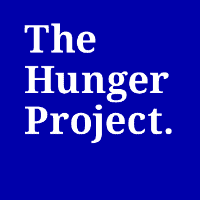SOFI 2019: Economic vulnerability puts world at risk of not meeting global nutrition targets.
The 2019 State of Food Security and Nutrition in the World report released in July 2019 explores the ongoing rise in global hunger. This year’s report called attention to the alarming departure from a decline in world hunger seen in the last decade. For four years now, undernourishment has been increasing slightly but steadily. Over the course of 2018, more than half a million additional people fell into conditions of hunger, bringing the estimated total people affected to 821.6 million. Nearly all of these people live in underdeveloped regions. For example, Africa continues to bear the brunt of this reality with 20 percent of its population – more than 256 million people – suffering from undernourishment.
Despite the difficult news, we at The Hunger Project encourage the sector as a whole to acknowledge the hard-won successes by our partners in ending hunger. While there is an increase in global hunger, the rate of individuals falling into conditions of hunger has slowed in the last year — demonstrating a renewed commitment by governments, organizations and individual stakeholders in the mission to end hunger and poverty.
Additionally, progress continues to be made on the third Sustainable Development Goal — good health and well being — with an estimated 41.6 percent of infants under six months being exclusively breastfed in 2018 compared with 37 percent in 2012. Children who are exclusively breastfed are at a distinct advantage, both being much more likely to survive those critical first few months of life and less susceptible to life-threatening conditions throughout their lives such as respiratory infections, diarrhoeal disease, urinary tract infections, obesity, asthma, and diabetes. In 2018, Africa and Asia — despite having the highest rates of undernutrition — had the highest prevalence of exclusive breastfeeding, a positive signal that grassroots awareness campaigns and interventions are working. Breastfeeding is also critical to achieving SDG 1 — end poverty in all its forms — as it is a resource available across the socioeconomic spectrum, reducing the economic burden on mothers and, with healthier beginnings, costly medical interventions for undernourished children in the long-term
Learn more about The Hunger Project’s work to improve and innovate nutritional practices.
Economic impact on undernutrition and food insecurity is a key focus of this year’s report, which notes that hunger has been increasing in many countries where economic growth is lagging. The report shows how economic shifts disproportionately challenge food security and nutrition where inequalities in the distribution of income and other resources are significant.
Learn more about The Hunger Project’s work to increase economic resilience in communities through savings and income-generating programs.
While the FAO voiced its concerns that the Sustainable Development Goal (SDG) of achieving zero hunger by 2030 is becoming increasingly unlikely, they also offered information on how to make strides towards achieving it. Specifically, the report advises, “We must invest wisely during periods of economic booms to reduce economic vulnerability and build capacity to withstand and quickly recover when economic turmoil erupts.” Read more about the FAO’s suggested economic strategies here.
The report also introduced a new method of evaluating both severe and moderate food insecurity throughout the world called the Food Insecurity Experience Scale (FIES). The intent behind this new method is to shift the global focus away from extreme hunger and towards securing nutritious and sufficient diets for everyone. This new metric includes those facing both moderate and severe food insecurity, bringing the number of people around the world who do not have reliable access to safe and nutritious food to over 2 billion — roughly 26 percent of the world’s total population.
Throughout changes in global undernourishment and food insecurity rates, The Hunger Project is committed to continuing to advocate for women-centered and community-led approaches with partner organizations, governments and communities around the world. The answer to this global challenge lies in strategic collaboration, now more than ever. Together, and with the full agency and partnership of those living in hunger, we can achieve the commitments the world has made with the Sustainable Development Goals.
Learn more about The Hunger Project’s strategic collaborative partnerships as a member of the Movement for Community-led Development.
The 2019 State of Food Security and Nutrition in the World report was published jointly by the Food and Agriculture Organization of the United Nations (FAO), the International Fund for Agricultural Development (IFAD), the United Nations Children’s Fund (UNICEF), the World Food Programme (WFP) and the World Health Organization (WHO).
